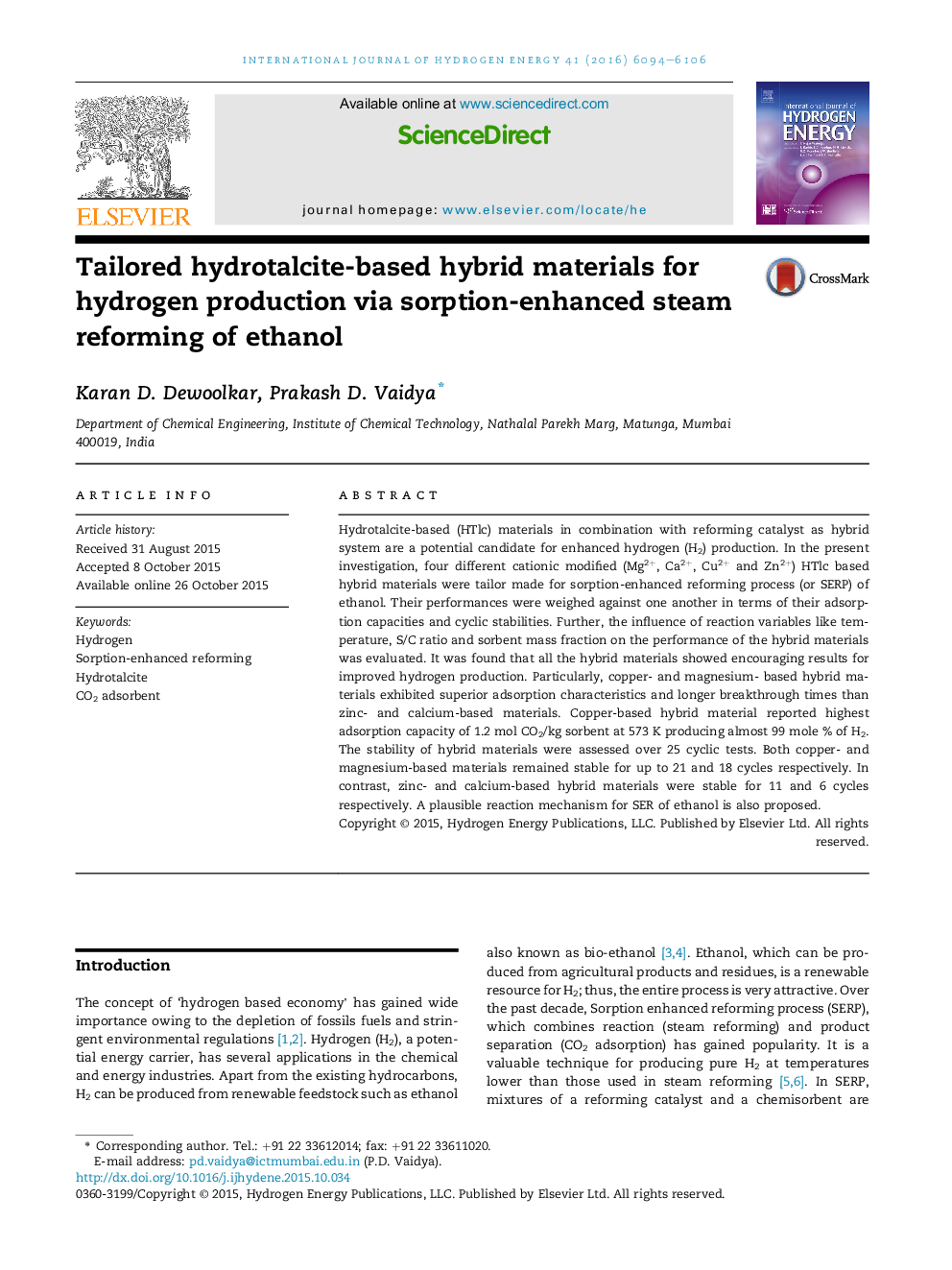| کد مقاله | کد نشریه | سال انتشار | مقاله انگلیسی | نسخه تمام متن |
|---|---|---|---|---|
| 1273615 | 1497411 | 2016 | 13 صفحه PDF | دانلود رایگان |
• Cationic modified hydrotalcite-like hybrid materials were employed for sorption-enhanced reforming of ethanol.
• Optimization of the SER process was accomplished.
• Cyclic stability tests were performed to assess the multi-cycle performance of the hybrid materials.
• A plausible reaction mechanism for the hybrid materials was proposed.
Hydrotalcite-based (HTlc) materials in combination with reforming catalyst as hybrid system are a potential candidate for enhanced hydrogen (H2) production. In the present investigation, four different cationic modified (Mg2+, Ca2+, Cu2+ and Zn2+) HTlc based hybrid materials were tailor made for sorption-enhanced reforming process (or SERP) of ethanol. Their performances were weighed against one another in terms of their adsorption capacities and cyclic stabilities. Further, the influence of reaction variables like temperature, S/C ratio and sorbent mass fraction on the performance of the hybrid materials was evaluated. It was found that all the hybrid materials showed encouraging results for improved hydrogen production. Particularly, copper- and magnesium- based hybrid materials exhibited superior adsorption characteristics and longer breakthrough times than zinc- and calcium-based materials. Copper-based hybrid material reported highest adsorption capacity of 1.2 mol CO2/kg sorbent at 573 K producing almost 99 mole % of H2. The stability of hybrid materials were assessed over 25 cyclic tests. Both copper- and magnesium-based materials remained stable for up to 21 and 18 cycles respectively. In contrast, zinc- and calcium-based hybrid materials were stable for 11 and 6 cycles respectively. A plausible reaction mechanism for SER of ethanol is also proposed.
Journal: International Journal of Hydrogen Energy - Volume 41, Issue 14, 20 April 2016, Pages 6094–6106
